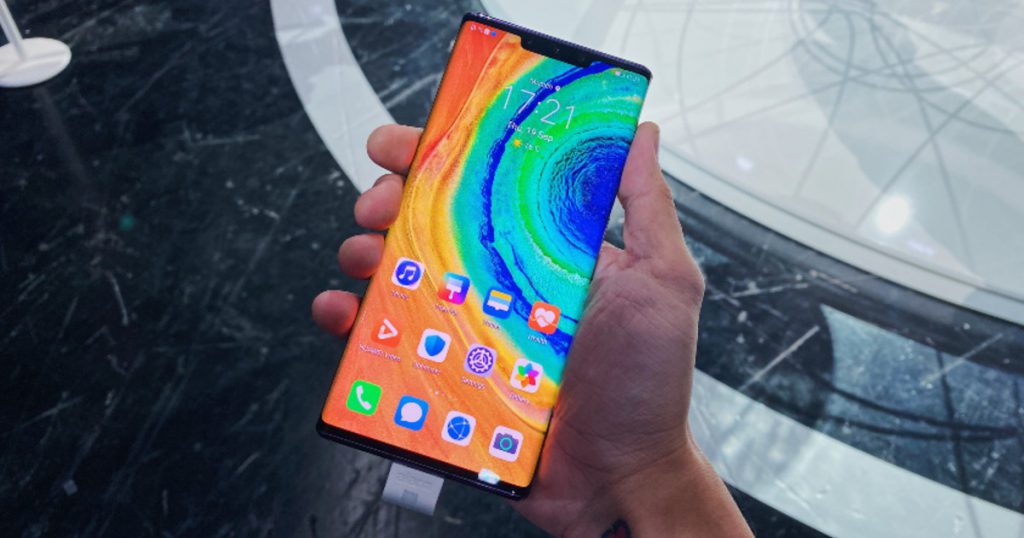After months of teasing and leaks, Huawei officially unveiled the Mate 30 series at their announcement event in Munich today (19th September).
And while the Mate 30 series was meant to close Chinese tech giant’s 2019 on a high note, things aren’t as simple as that anymore — the ongoing US trade ban has cast a shadow of uncertainty over the phone, making this one of the more interesting product launches in recent memory.
But before we get into that, let’s start from the top. From specs to availability, here’s everything you need to know about Huawei’s latest flagship phone.
Nice To Mate You

Compared to last year’s Mate 20 series, both the Mate 30 and Mate 30 Pro have increased in size — the Mate 30 now sports a 6.62-inch Rigid OLED display, while the Mate 30 Pro comes in slightly smaller with a 6.53-inch Flex OLED display that pretty much covers the entire front of the phone.
And while the Mate 30’s design is pretty much par for course for a 2019 smartphone, the Mate 30 Pro switches thing up a little by removing the volume buttons.
Instead, the phone leverages on the sensors in its display to act as virtual volume buttons, and you now adjust the sound by sliding your fingers along the side of the phone.
These virtual buttons can even act as a shutter when taking photos, and we’re sure Huawei will find additional uses for it in the future. Gaming, perhaps?
Nevertheless, the omission of physical buttons is a bold move but we’ll have to test more to determine how responsive it is.

Considering that the Mate series is Huawei’s top-of-the-line flagship phone, it should come as no surprise that the Mate 30 comes with top-of-the-line internals as well.
Both the Mate 30 and Mate 30 Pro are equipped with the latest 7nm Kirin 990 processor and of 8GB of RAM, which basically means that the phones will be able to handle pretty much anything you throw at it (if numbers are your thing, Huawei says that the new chip gives a 23% boost in performance and power efficiency).
Speaking of power, you won’t find anything to complain about here either — the Mate 30 comes with a generous 4,200 mAh battery, while the Mate 30 Pro further bumps that already-impressive figure up to 4,500 mAh.
When it comes to charging, both the Mate 30 and Mate 30 Pro come with something Huawei is calling “Wireless Supercharge”. This brings the phones’ wireless charging up capabilities up to 27W, and can apparently get you from 0% to 70% in just 30 minutes.
Last year’s Mate 20 was also the first smartphone to introduce Reverse Wireless Charging — the ability to use the phone to charge other qi-enabled devices —and Huawei have tripled the feature’s charging speed.
We’ll admit this isn’t something we use regularly, but it’s nevertheless a good thing to have when you need power in a pinch.
Good Photo, Better Video

One of Huawei’s biggest aces in the hole is its partnership with the legendary German camera manufacturer Leica, and that collaboration continues with the Mate 30 series.
Like the P30 before it, the Mate 30 comes equipped with a triple camera setup, consisting of a 40MP SuperSensing Camera, 16MP Ultra Wide Angle Lens, and 8MP Telephoto lens.
The Mate 30 Pro, on the other hand, once again pushes the envelope with a quad camera system, consisting of a 40MP Cine camera, 40MP SuperSensing Camera, 8MP Telephoto Camera, and 3D Depth Sensing Camera.
These fancy names are going to mean little to the average user, but based on the little time we’ve had with the phone (read: about two minutes) you can rest assured that the Mate 30 continues to produce the same level of image quality that we’ve come to expect from Huawei.


Photos are as vivid and sharp as ever, and they’re backed up by what is probably the best Night Mode on a smartphone right now.
The P30 Pro’s binoculars-esque 10x hybrid zoom and 50x digital zoom were big — if not the main — selling points for that phone, and while the Mate 30 doesn’t reach those heights, its 3x optical and 30x digital zoom should still suffice in most situations.
While it’s never been officially confirmed, our head-canon is that the “P” in P30 stands for photography anyway, so it doesn’t really make sense for the Mate 30 to overtake its little brother in this respect.
One interesting takeaway from the keynote is that Huawei is now positioning the Mate 30 series as its flagship video device.
With the aforementioned 40MP Cine camera the Mate 30 is capable of doing some of its photography innovations in video form, such as super low-light videography and super slow motion videos (filmed at 7,680 frames per second, to be exact).
The video examples we saw at the keynote were very promising, but once again, we’re going to have to try these features out for ourselves before we start calling the Mate 30 the best video smartphone on the market.
Hello, Huawei (Mobile Services)

At this point, the Mate 30 seems poised to be another big win for Huawei’s mobile lineup, but we’d be remiss if we didn’t address the Google-sized elephant in the room.
We’ve been covering this topic for months, but in his keynote, Huawei CEO Richard Yu basically confirmed that the Mate 30 series won’t be able to install Google mobile services (GMS), and will use Huawei mobile services (HMS) instead.
Yu spoke very briefly on the topic, and did not explicitly say how HMS would act as a replacement for apps like YouTube, Gmail and Google Maps. It’s unfortunately something that will remain unclear at the time of writing, so we’ll just have to wait and see how Huawei is planning to play this one out.
Initial Impressions

After the extremely strong showing of the P30 Series, we had very high expectations for the Mate 30 and in a way, they did reach them.
As far as hardware is concerned, the Mate 30 and Mate 30 Pro continue to push the standards their little brother had set, and can definitely be considered a worthy successor to last year’s Mate 20.
The introduction of Huawei mobile services however, have made things a little less clear. The implications of the Mate 30 not coming with Google Mobile services is anyone’s guess at this point, and it looks like we’ll only know for sure when we get our hands on the phone and see for ourselves.
And on that note, we’re actually not sure when the Mate 30 will be available.
While Yu did mention pricing (799 Euros for the Mate 30 and 1099 Euros for the Mate 30 Pro), there was no word on a release date — though we’re guessing that it’ll likely arrive by the end of this year.
The Mate 30 is shaping up to be one of the most unique products of 2019, and we’ll definitely be keeping a close eye on it moving forward.
At this juncture, it could either be a missed opportunity or one of the best smartphones of 2019, and only time will tell which one it’ll be.
Feature Image Credit: Vulcan Post











